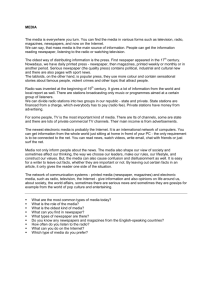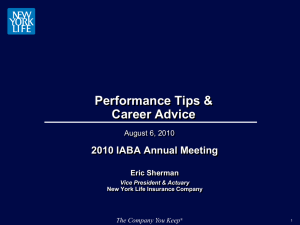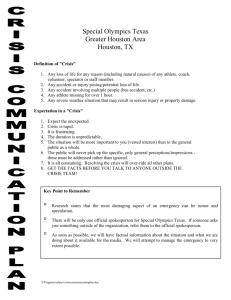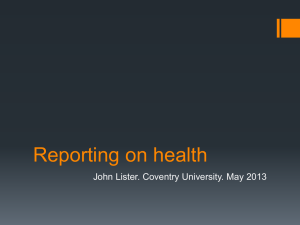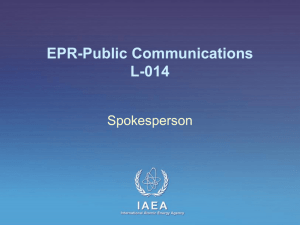Tips on writing a media release
advertisement
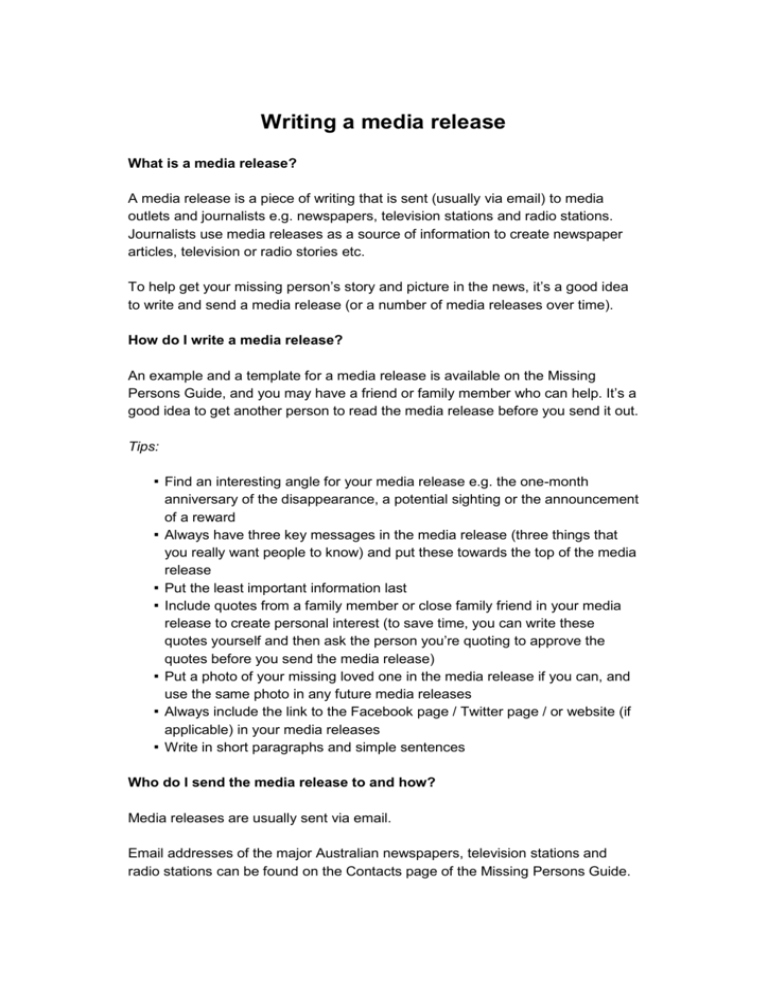
Writing a media release What is a media release? A media release is a piece of writing that is sent (usually via email) to media outlets and journalists e.g. newspapers, television stations and radio stations. Journalists use media releases as a source of information to create newspaper articles, television or radio stories etc. To help get your missing person’s story and picture in the news, it’s a good idea to write and send a media release (or a number of media releases over time). How do I write a media release? An example and a template for a media release is available on the Missing Persons Guide, and you may have a friend or family member who can help. It’s a good idea to get another person to read the media release before you send it out. Tips: ▪ Find an interesting angle for your media release e.g. the one-month ▪ ▪ ▪ ▪ ▪ ▪ anniversary of the disappearance, a potential sighting or the announcement of a reward Always have three key messages in the media release (three things that you really want people to know) and put these towards the top of the media release Put the least important information last Include quotes from a family member or close family friend in your media release to create personal interest (to save time, you can write these quotes yourself and then ask the person you’re quoting to approve the quotes before you send the media release) Put a photo of your missing loved one in the media release if you can, and use the same photo in any future media releases Always include the link to the Facebook page / Twitter page / or website (if applicable) in your media releases Write in short paragraphs and simple sentences Who do I send the media release to and how? Media releases are usually sent via email. Email addresses of the major Australian newspapers, television stations and radio stations can be found on the Contacts page of the Missing Persons Guide. Depending on your circumstances, you may only choose to send your email address to media in a particular state or area, or you may choose to send it to multiple or all states. It’s also a good idea to send your media release to your local newspaper/s and radio station. Tips: ▪ Send your media release as early as possible in the morning ▪ Don’t send media releases more often than once a fortnight unless you have specific news to share ▪ Think about also sending your media release to online media e.g. popular blog sites or online magazines such as www.mamamia.com.au Choosing a spokesperson and a media contact If the media wants to ask questions about your media release they will usually call the media contact (whose name and phone number is included at the bottom of the media release) and ask to speak to a spokesperson. You need to choose someone who will be available to speak to the media at short notice, who knows the details of the case, and who is capable of clearly sharing the right information with the media. Generally, the spokesperson will be a family member or close friend of the family. Your media contact doesn’t have to be the same as the spokesperson. The contact needs to be someone who is available to take all media calls and respond quickly. The media contact can put journalists in touch with the spokesperson for interviews and quotes. Tips for the spokesperson and media contact: ▪ Write down three key messages that you want journalists to know, and try to mention these three things every time you speak to the media ▪ Be prepared that journalists may call to follow up the media release straight away, and the media contact may get lots of calls ▪ If you need to get back to a journalist for whatever reason, find out their deadlines and always respond within their deadlines ▪ Newspaper lead-times are generally daily, radio is hourly, and other media, like magazines, can be much longer ▪ Nothing is ever ‘off the record’ i.e. don’t share any information that you wouldn’t be comfortable being shared with the public
![Crisis Communication[1] - NorthSky Nonprofit Network](http://s2.studylib.net/store/data/005428035_1-f9c5506cadfb4c60d93c8edcbd9d55bf-300x300.png)
